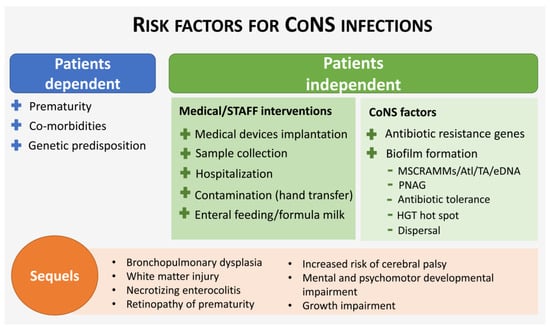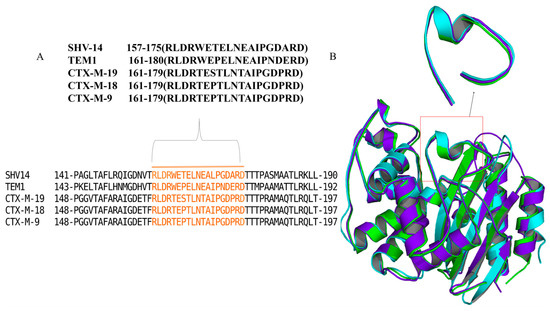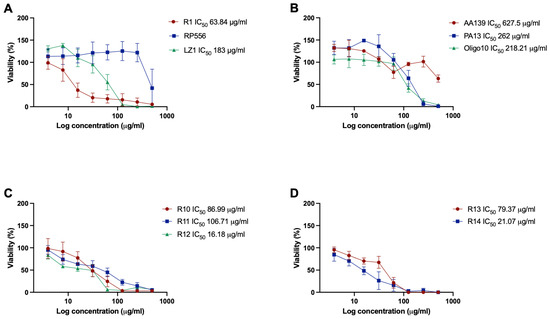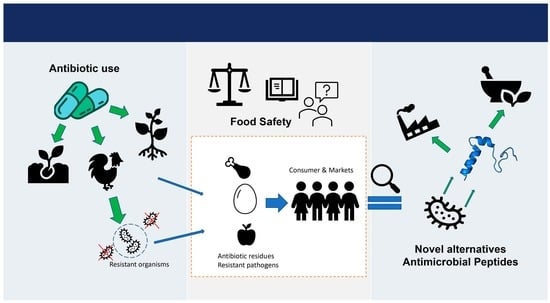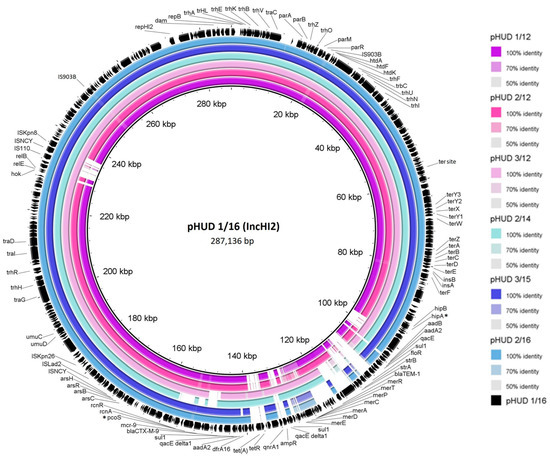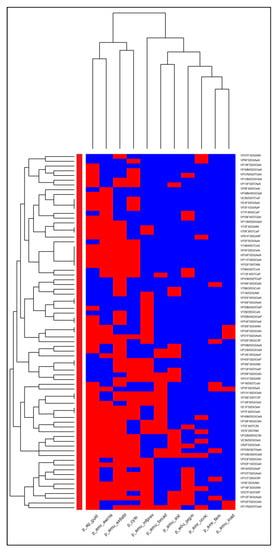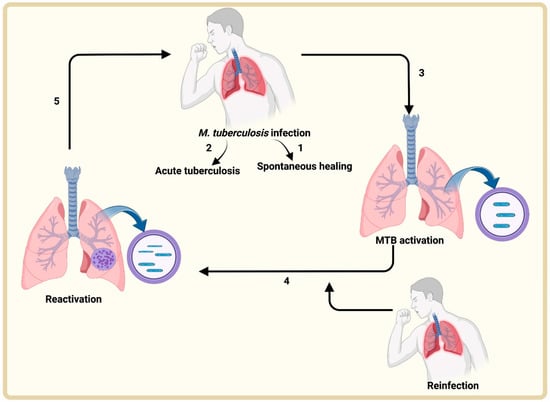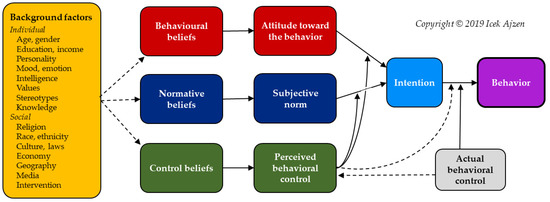1
Centre of Biological Engineering, LIBRO—Laboratório de Investigação em Biofilmes Rosário Oliveira, University of Minho, Campus de Gualtar, 4710-057 Braga, Portugal
2
LABBELS—Associate Laboratory in Biotechnology and Bioengineering and Microelectromechanical Systems, Braga and Guimarães, Portugal
Antibiotics 2023, 12(3), 554; https://doi.org/10.3390/antibiotics12030554 - 10 Mar 2023
Cited by 17 | Viewed by 8027
Abstract
Infections are one of the most significant complications of neonates, especially those born preterm, with sepsis as one of the principal causes of mortality. Coagulase-negative staphylococci (CoNS), a group of staphylococcal species that naturally inhabit healthy human skin and mucosa, are the most
[...] Read more.
Infections are one of the most significant complications of neonates, especially those born preterm, with sepsis as one of the principal causes of mortality. Coagulase-negative staphylococci (CoNS), a group of staphylococcal species that naturally inhabit healthy human skin and mucosa, are the most common cause of late-onset sepsis, especially in preterms. One of the risk factors for the development of CoNS infections is the presence of implanted biomedical devices, which are frequently used for medications and/or nutrient delivery, as they serve as a scaffold for biofilm formation. The major concerns related to CoNS infections have to do with the increasing resistance to multiple antibiotics observed among this bacterial group and biofilm cells’ increased tolerance to antibiotics. As such, the treatment of CoNS biofilm-associated infections with antibiotics is increasingly challenging and considering that antibiotics remain the primary form of treatment, this issue will likely persist in upcoming years. For that reason, the development of innovative and efficient therapeutic measures is of utmost importance. This narrative review assesses the current challenges and emerging diagnostic tools and therapies for the treatment of CoNS biofilm-associated infections, with a special focus on late-onset sepsis.
Full article
(This article belongs to the Special Issue Feature Reviews on Antibiofilm Strategies)
▼
Show Figures

